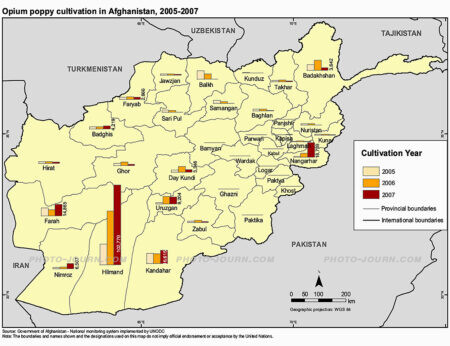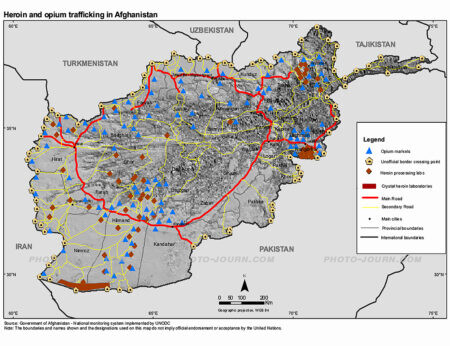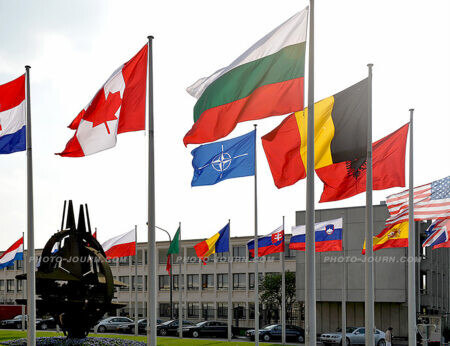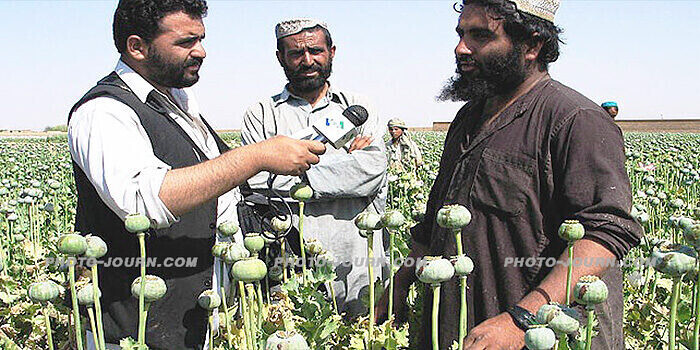Police and drug enforcement administrations around the world are preparing for a flood of heroin in the months ahead following a 34 per cent increase in the opium harvest in Afghanistan this year.

The Annual Opium Survey by the United Nations Office on Drugs and Crime (UNODC) says that opium production in Afghanistan has doubled in the last two years. The country is now the almost exclusive supplier of heroin to the world market, accounting for 93 per cent of global opium supply.
The report estimates the total annual opium harvest, which ended in July, at up to 9,000 tonnes, compared to 6,200 tonnes last year.
In addition, the total area devoted to opium farming increased by 17 per cent, from 165,000 hectares to 193,000 hectares, while the number of heroin processing labs had also increased.
Opium poppy cultivation gets out of control
This is despite the number of Afghanistan’s 34 provinces being opium free doubling to 13 in the last 12 months.
The survey claims the amount of Afghan land now devoted to growing opium is larger than the total area in Columbia, Peru and Bolivia for growing coca, the plant used as the raw material for cocaine.
It also states that almost 14 per cent of the country’s entire population of 25 million is involved in opium production
In a statement accompanying the survey, the UNODC said the production of heroin “had soared to frightening record levels in 2007.”

According to the survey, 80 per cent of the opium was grown along the border with Pakistan, with the southern Afghanistan province of Helmand accounting for 48 per cent of production and now the world’s largest source of illicit drugs.
In fact, according to the survey, Helmand’s opium cultivation now exceeds the entire coca output of Columbia, the total cannabis output of Morocco and the total opium output of Myanmar.
It is estimated the farm value of this year’s opium crop is around US$1 billion, while the street value of the heroin produced from it is many times higher.
The UNODC report blames the increased opium harvest on corrupt officials in President Hamid Karzai’s government and casts doubt on the effectiveness of efforts by the United States and other Western countries to fight the cultivation.
It also warns that radical Islamic Taliban insurgents, which have links to Al-Qaeda, are profiting from the crop and providing protection for conveys of opium into neighbouring countries and using the money gained to buy weapons, fund logistics and pay salaries.
President Karzai rejected U.S. offers to spray this year’s crop after Afghans said herbicide could affect livestock, legal crops and water supplies.
Antonio Maria Costa, executive director of the UNDOC, said the U.N. supports the Afghan government’s position, but added that crop eradication was a key element of any strategy to combat the trade.
He called on the international military forces operating in Afghanistan under the NATO (North Atlantic Treaty Organization) umbrella to help in the fight against opium – which they have so far refused to do.
“The opium economy of Afghanistan can be bankrupted by blocking the two-way flow of imported chemicals and exported drugs. In both instances materials are being moved across the southern border and nobody seems to take notice,” he said.
While urging NATO to stay clear of eradication efforts, Costa said the alliance should support counter-narcotics operations by destroying opium labs, targeting traffickers and closing opium markets.
“Since drug trafficking and the insurgency live off each other, the foreign military forces operating in Afghanistan have a vested interest in supporting counter-narcotics operations. It would be an historic error to let Afghanistan collapse under the blows of drugs and insurgency,” he said.
Counter narcotics operations worsens fight

A meeting in Brussels early next month will decide if NATO soldiers should be involved in the drugs fight.
However, London based international think-tank, the Senlis Council, said the report showed that counter-narcotics operations were making things worse.
Senlis executive director, Emmanuel Reinert, said, “US-led efforts to destroy poppy crops are at odds with counter-insurgency and development efforts.”
Farmers were growing poppies because they lacked a profitable alternative, said the statement.
According to the UNODC report the gross income from a hectare of opium is US$4,600, compared to US$530 for wheat.
According to Costa, the Afghan government’s poppy eradication program should be undertaken “more honestly and more vigorously” and farmers choosing not to grow opium should be given rewards, such as new schools and hospitals.
“The situation is dramatic and getting worse by the day. No other country in the world has ever had such a large amount of farmland used for illegal activity, beside China 100 years ago when it was a major opium producer,” he said.

According to Costa there is a “tremendous amount of collusion” between traffickers and government officials. “It is clearly documented now that insurgents actively promote or allow and then take advantage of the cultivation, refining and the trafficking of opium,”
“The government has lost control of this territory because of the presence of the insurgents. Its benign tolerance of corruption is undermining the future: no country has ever built prosperity on crime,” Costa added.
The report adds pressure on President Karzai to consider new ways of curbing an expansion that threatens to turn Afghanistan into a “narco-state,” where some warn that groups such as Al-Qaeda could once again find sanctuary.
In the meantime the world is set to see the results of the UN and NATO forces failures in a glut of heroin in coming months.
The sheer magnitude of the crop is also likely to result in lower street prices and higher levels of purity of finished product, resulting in increased incidents of overdosing amongst users.
Feature photo VOA/ Wikipedia
Related:
- War on drugs a failure says international group
- Foreigners caned most in Malaysia
- Killer PMA back in Aussie clubs
- Gili Trawangan a paradise lost
He has spent extensive periods of time working in Africa and throughout Southeast Asia, with stints in the Middle East, the USA, and England.
He has covered major world events including Operation Desert Shield/ Storm, the 1991 pillage in Zaire, the 1994 Rwanda genocide, the 1999 East Timor independence unrest, the 2004 Asian tsunami, and the 2009, 2010, and 2014 Bangkok political protests.
In 1995 he was a Walkley Award finalist, the highest awards in Australian journalism, for his coverage of the 1995 Zaire (now Democratic Republic of Congo) Ebola outbreak.
Most recently he was the Thailand editor/ managing editor of AEC News Today . Prior to that he was the deputy editor and Thailand and Greater Mekong Sub-region editor for The Establishment Post, predecessor of Asean Today.
In the mid-80s and early 90s he owned JLF Promotions, the largest above and below the line marketing and PR firm servicing the high-technology industry in Australia. It was sold in 1995.
Opinions and views expressed on this site are those of the author’s only. Read more at About me
Latest posts by John Le Fevre (see all)
- Kaavan’s great escape photo special (video & gallery) – November 30, 2020
- A real life fairy tale: Cambodia provides sanctuary to Kaavan, the world’s loneliest elephant (video & gallery) *updated – November 30, 2020
- Death for corruption and press freedom abused as Thailand continues Nth Korean-like slide – July 23, 2015
- Thailand’s young rice farmers boost income, slash costs with switch to organic, AWD method – May 29, 2015

